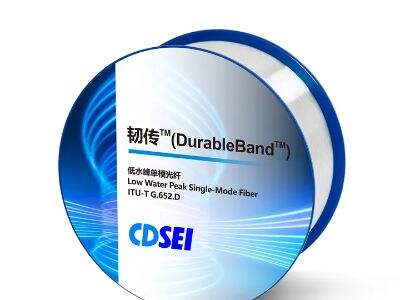We are all using something called optical fibre when we play games, watch videos, or speak with our friends online on the internet. Optical fiber is like a special thin rod can transfer lot of information very fast. It allows us do make our cities to be smarter and better connected.
What is Optical Fiber?
Optical fiber is a special type of wire composed of very thin threads of glass or plastic. These components are packaged together and used to transmit data in optical signals. That means information can propagate super fast through it, faster than any regular Strain of metal wires. That is why internet connections and phone services are frequently made with optical fiber.
Smart Cities And The Role Of Optical Fiber
In smart cities, a lot of devices and systems are connected to the internet so they can communicate with one another and with us. This is where optical fiber really comes into its own. It is the core component of the network that allows all of these devices to exchange information. Traffic lights, for example, may connect to sensors that monitor the number of vehicles on the road. That enables them to adjust their timing and minimize traffic jams, making it faster for drivers at the same time that it helps keep the air cleaner.
Optical Fiber and Our Future
As more cities get smart, we will require faster and reliable internet. It was fantastic that optical fiber because high-speed massive transmissions would be havens. This means it will be possible to apply new technologies such as the use of robots, remote health checks, and self-driving cars to tell us how to make our cities safer and better places to live.
The use of optical fiber has one significant advantage, namely, it provides very reliable performance. Because it is glass or plastic, it doesn’t get mucked up by stuff like adverse weather or other signals, which can get in the way of regular wires. This turns into much more stable internet with lesser issues.
Another benefit is speed. Reaching speeds of up to 100 gigabits per second! This is significantly faster than other forms of internet. You can download movies, video chat with friends and play games online without delays.
Building Inclusive Cities
When asked for an example, he pointed to what he called an example high-impact project: the deployment of optical fiber in one of the poorest cities in the world. It is a great boon to everyone who has it because of the no matter the importance personal, political or economic of the internet of things, everyone now has fast internet, wherever they come from, and whatever money they have. This is crucial for students who need the internet for school and for older people who want to talk to their families.
Last but not least the optical fiber is extremely crucial for the connected future of smart cities. It is indispensable in building the cities of tomorrow with its economy, reliability and inclusiveness. We continue developing our optical fiber technology that paves the way to a world where everyone could enjoy the benefits of a smarter city with a seamless connection.
 EN
EN
 CN
CN

